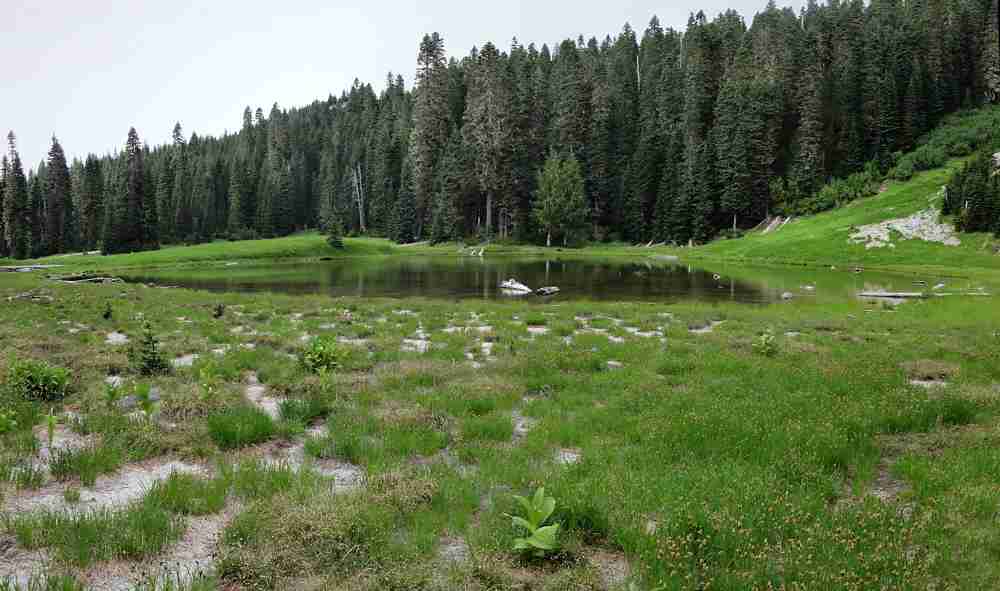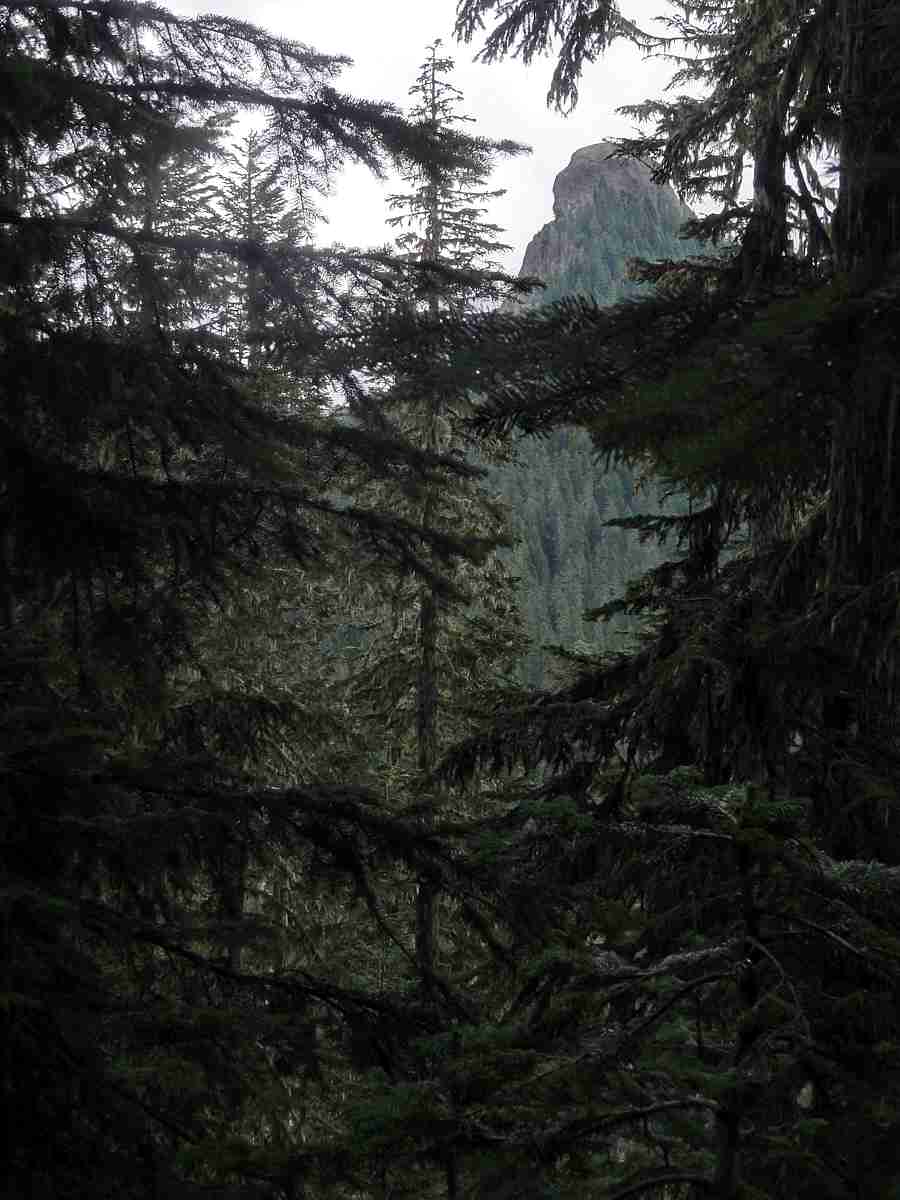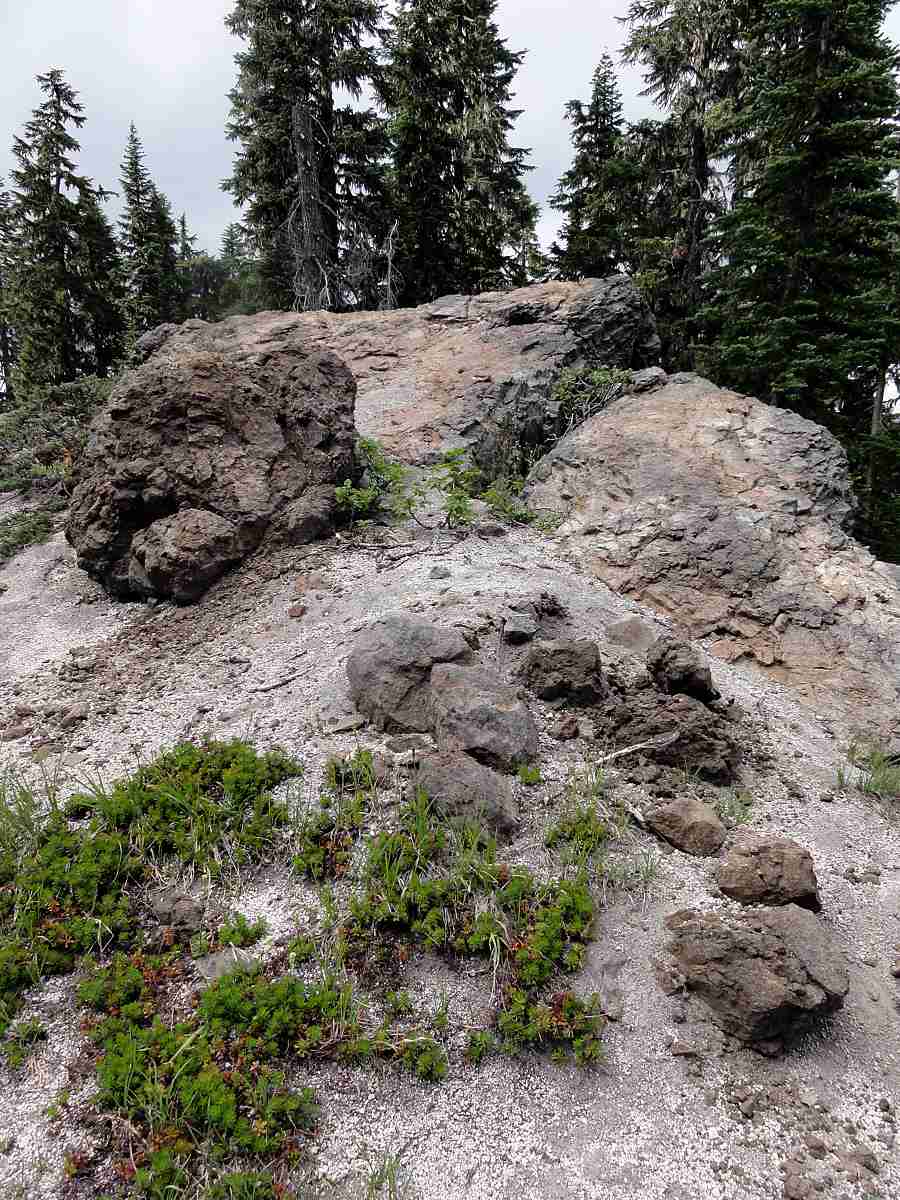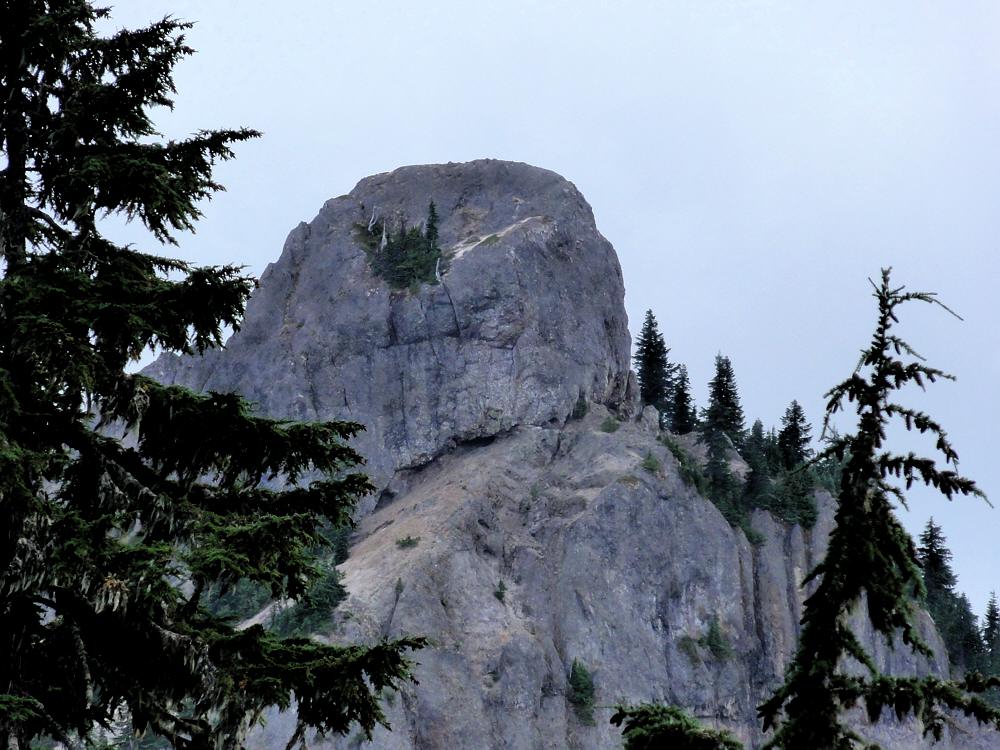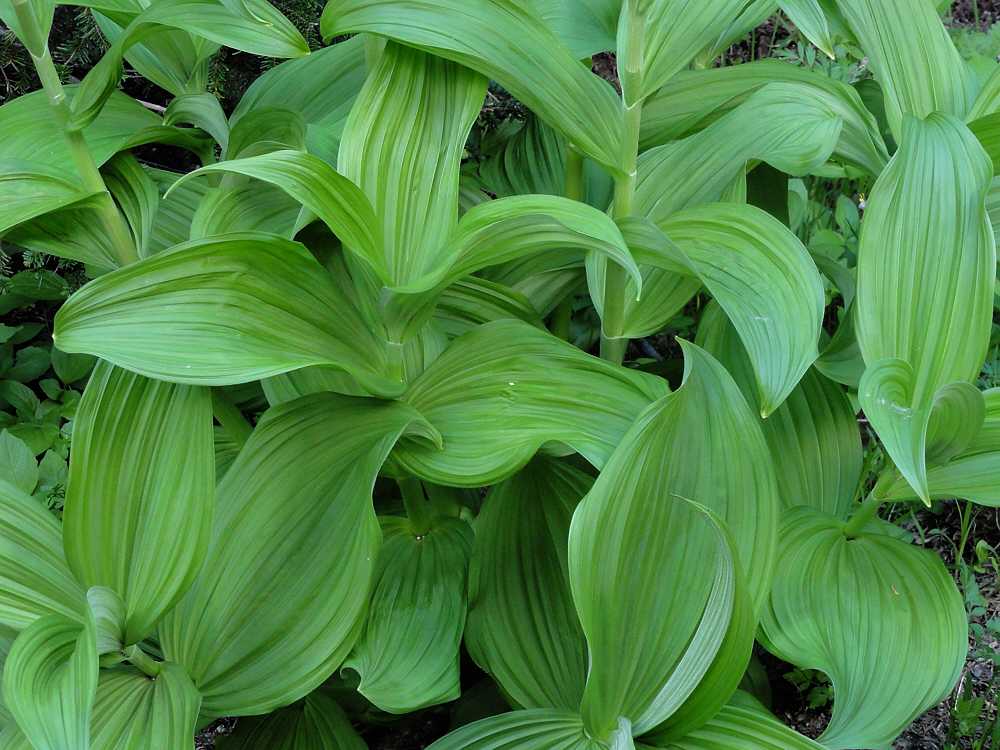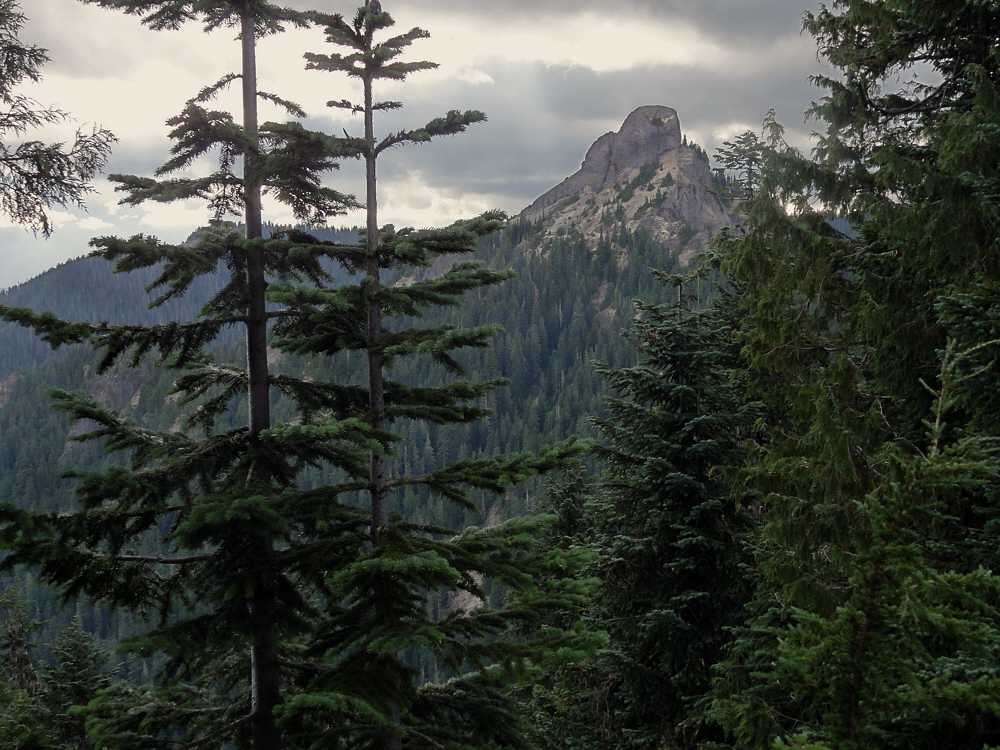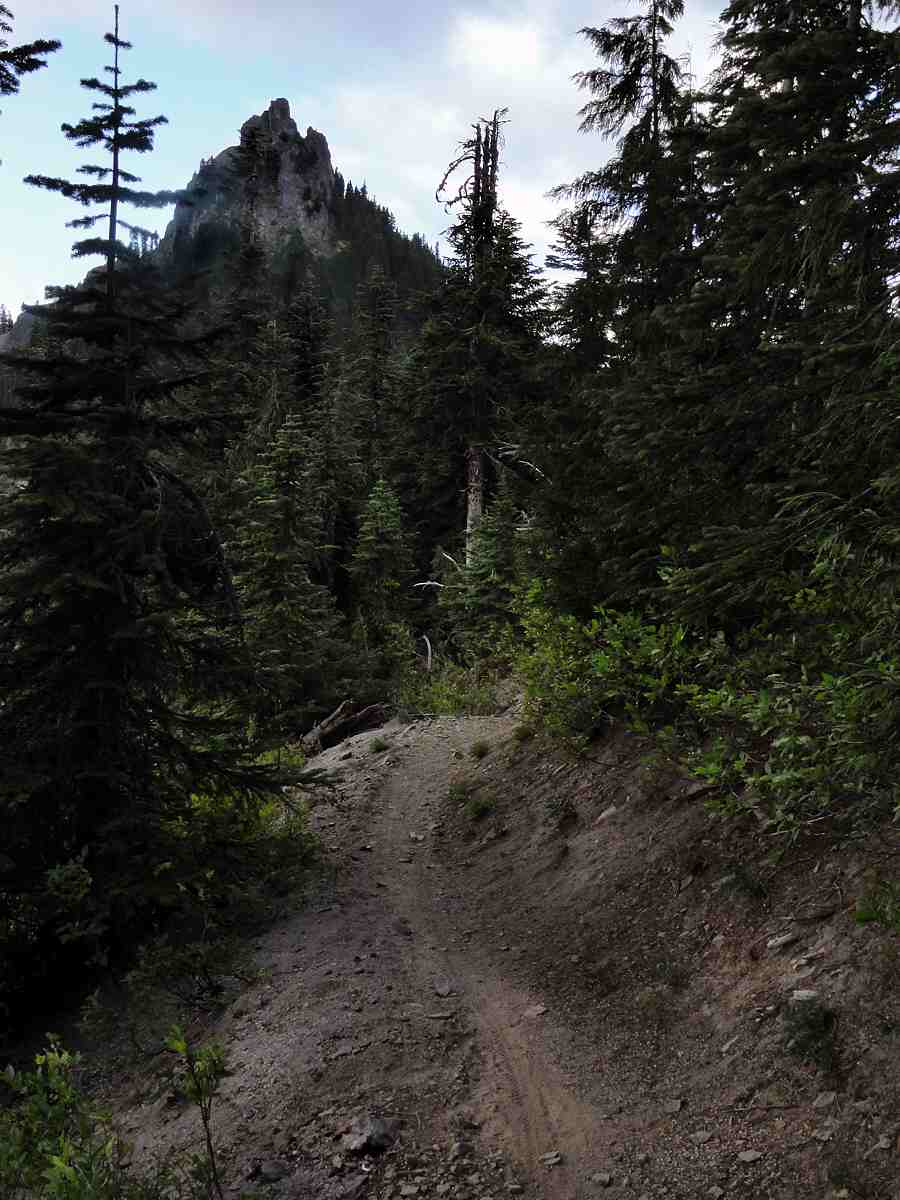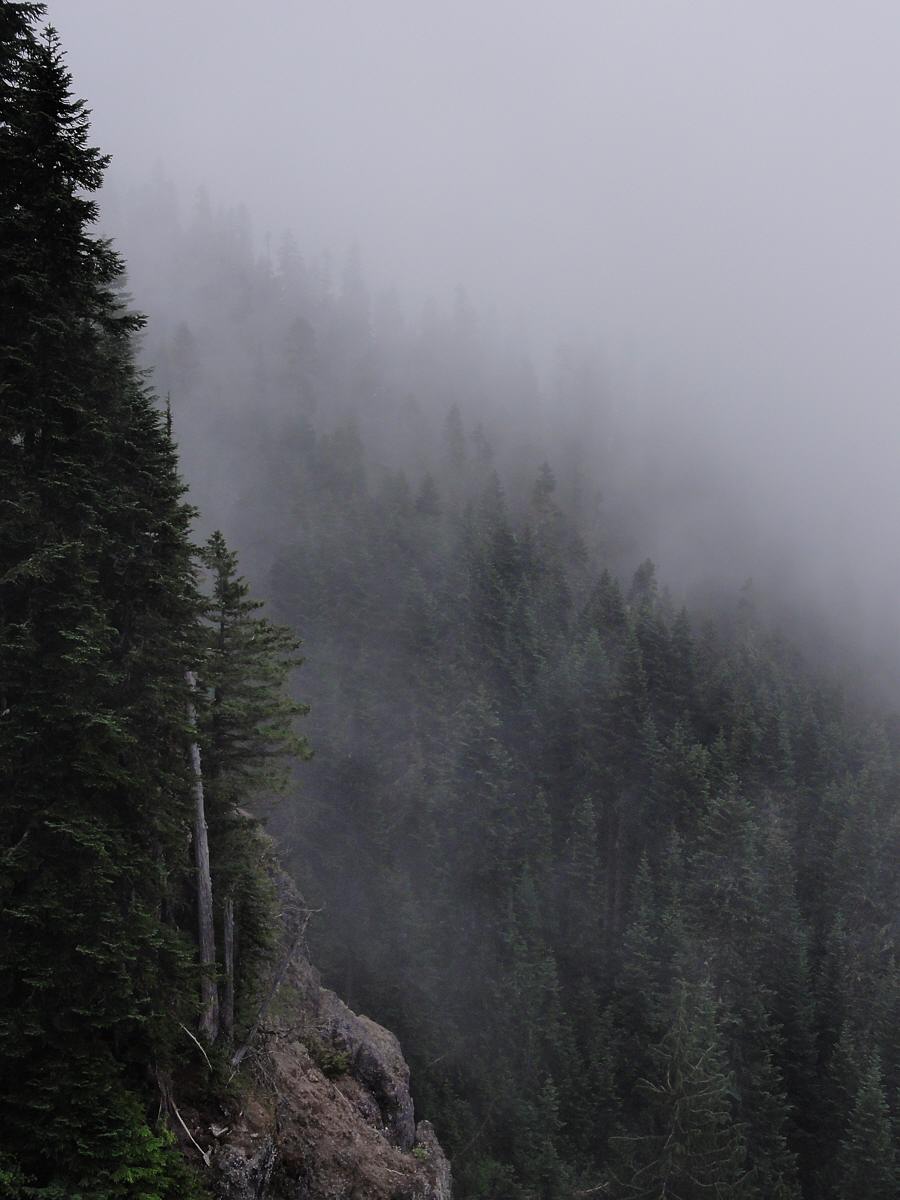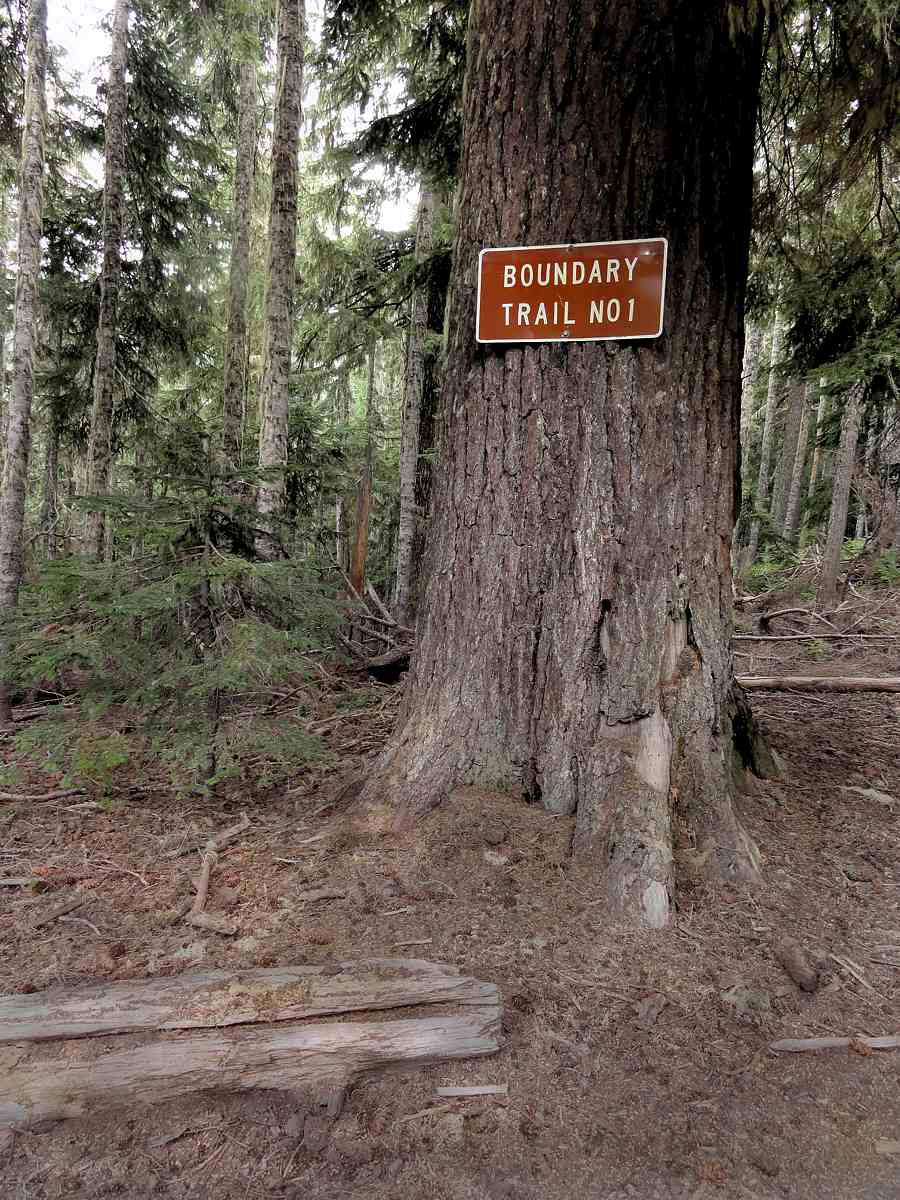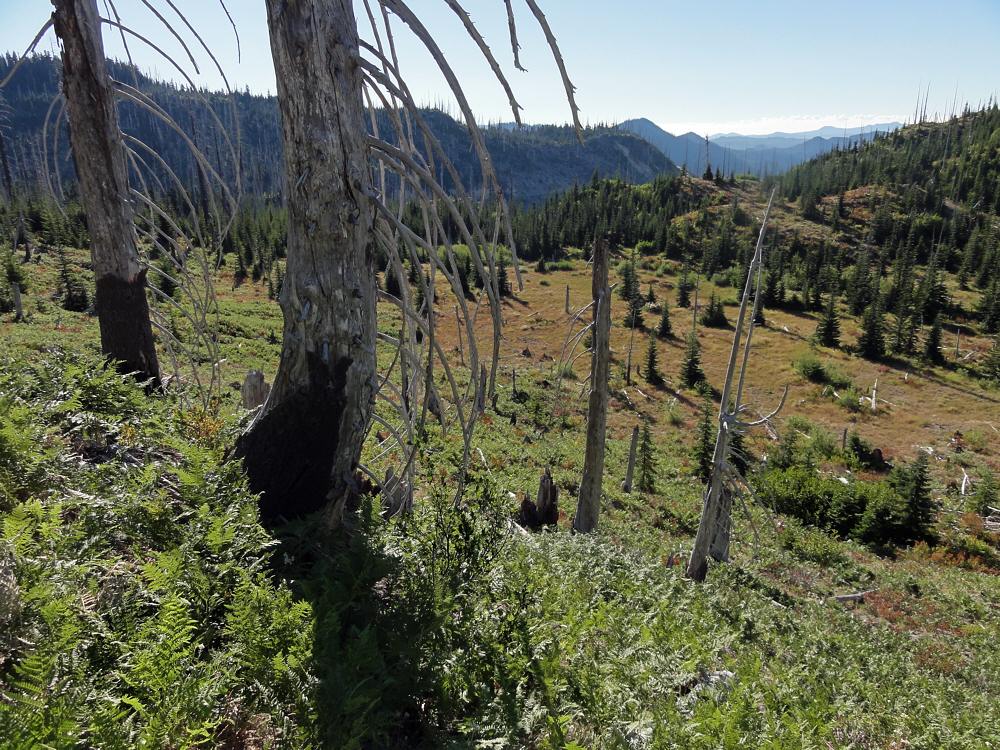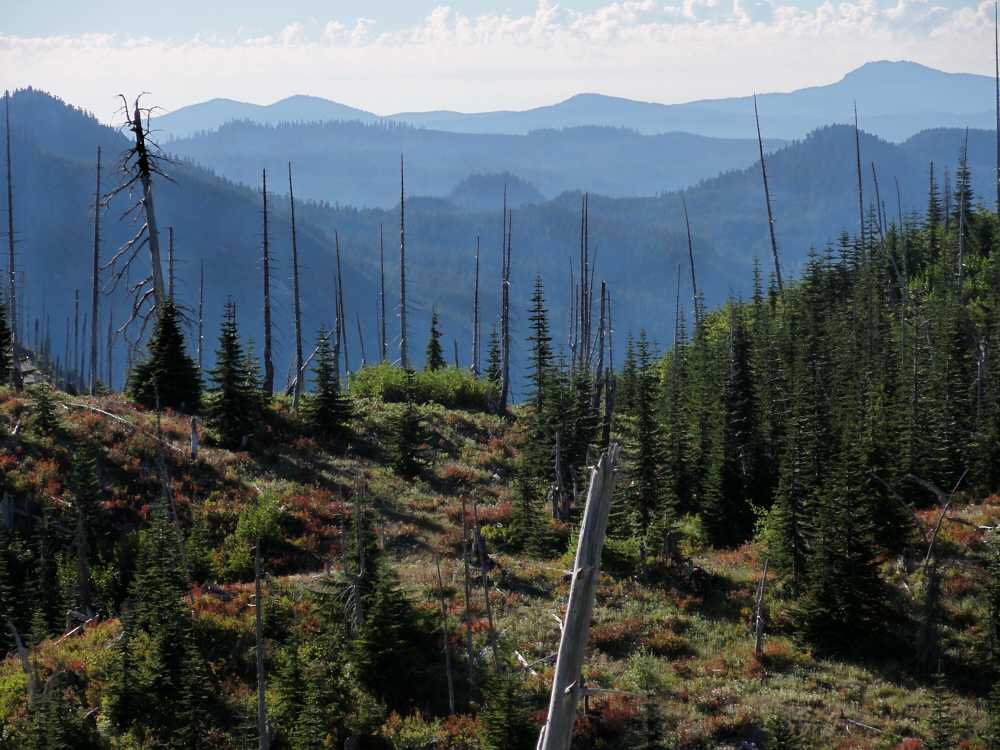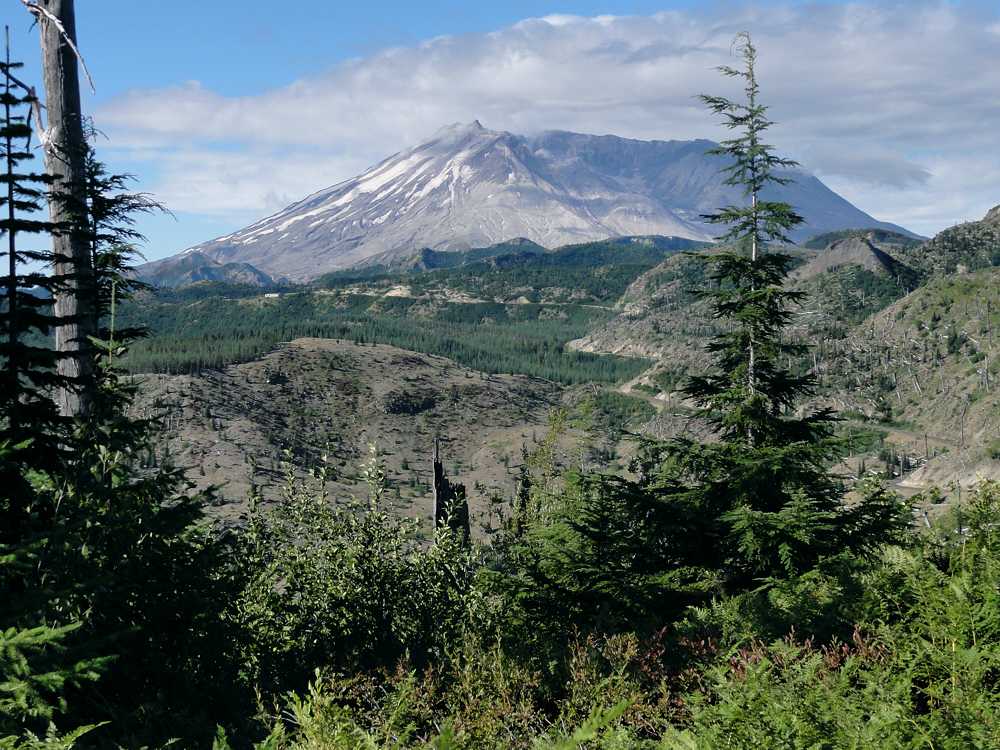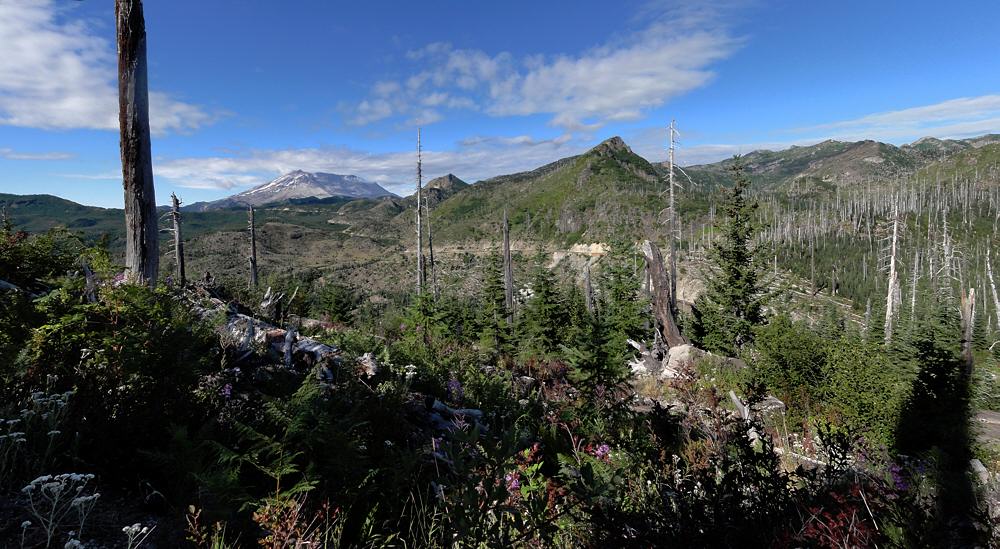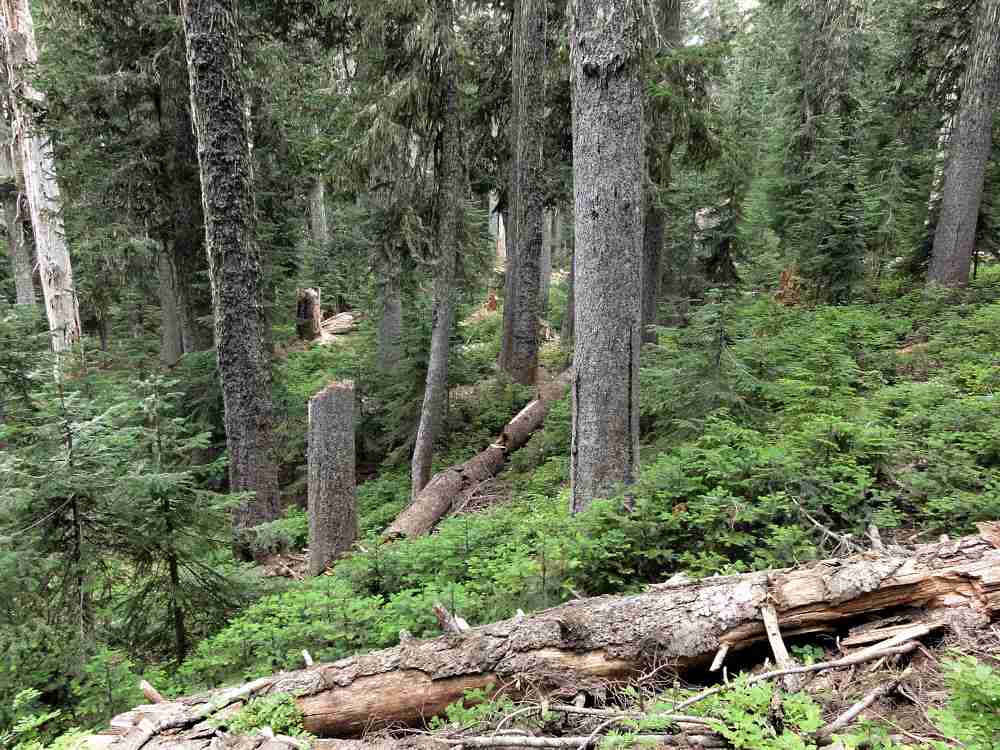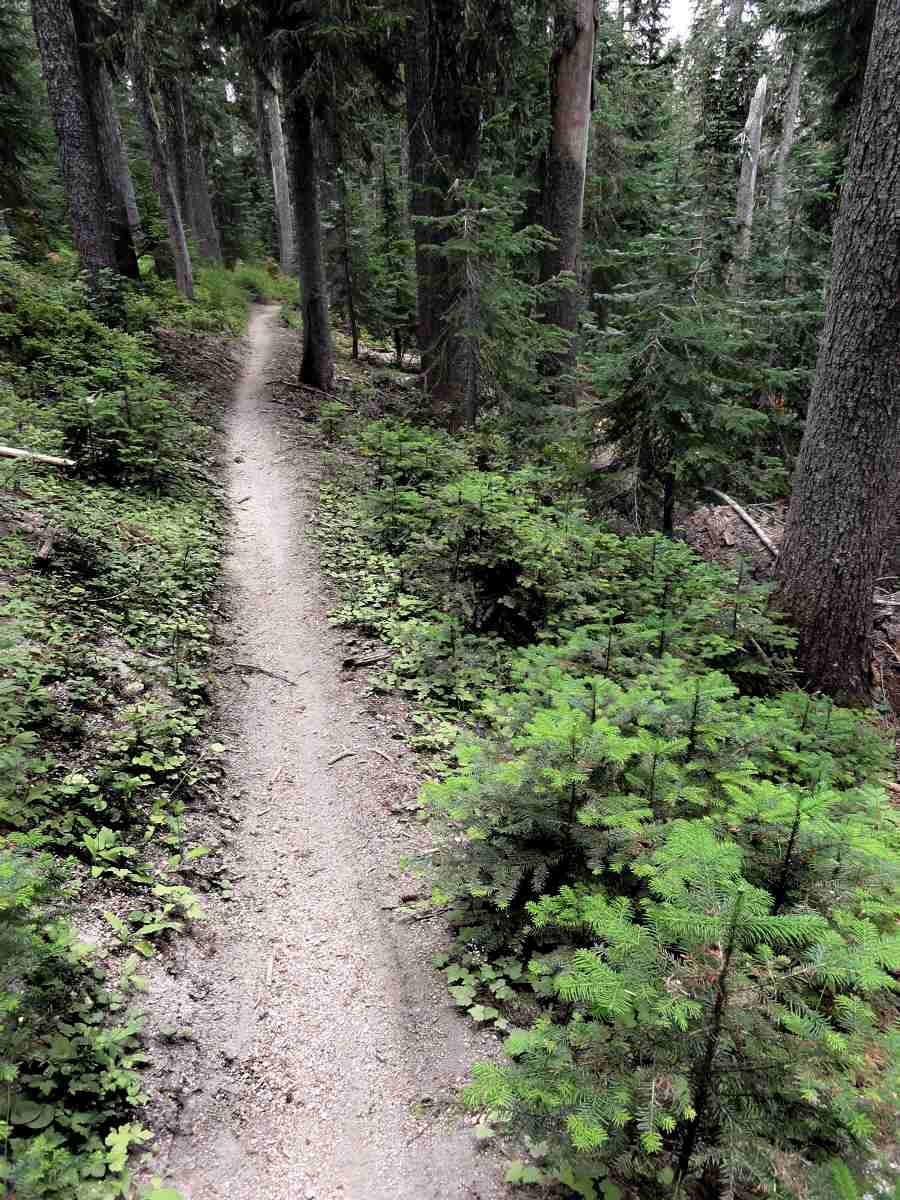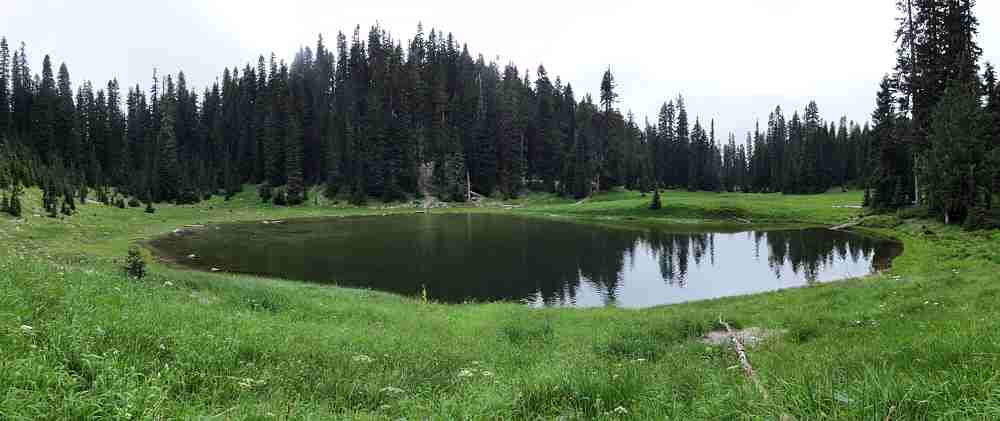So the first day of this trip was about one day's worth of hiking, plus several desperate hours more, to find a place out of the cold wind. I'd planned to tank up on water at Badger Lake and then noodle along until I found a cozy place to hang by my feet for the night, but things never go that way, so I kept hiking faster and faster as the day got darker and darker, colder and colder.
Another view of the pleasant but shallow Badger Lake.
It started fine. Sun. Calm winds. (I like that phrase. Calm winds. Like winds but not. Power completely benign and under control. But still there, waiting to get loose.)
Kirk Rock, a little farther on, from the west.
Well, you know. How it goes, is, first, some clouds. You figure two, three hours before they slowly slide in and even so it's only gradual, and you expect them to thin out and evaporate as they infiltrate they sky, returning you to sunshine. Given that, it's no surprise that my clouds were on me 20 minutes after I estimated that I had at least two hours. And they kept getting thicker, and didn't seem interested in moving along and letting the sun have a chance for a change.
In the north armpit of Kirk Rock.
Which is why I did a lot of walking that first day. You walk out of the St. Helens Monument area, cross Road 25, and enter a quieter forest, with two water sources if you're lucky. There is a trickle a couple of miles in, and then Badger Lake, which seems like a good place to camp until you get there. Somehow it always seems to be cold and breezy, and not far enough in besides.
Ditto.
And beyond it there isn't either any level ground to speak of, if you sleep right down there on it, or any really sheltered place to hang from your hind claws. Or, um, I mean put up your hammock for the night. So that day was a long one, until finally I hit a low spot where the trail, after passing Kirk Rock, Shark Rock, and Craggy Peak, takes a turn north and down toward Yellow Jacket Pass.
Meadow to the north between Kirk Rock and Shark Rock.
And it so happened that at the low point I saw a flat down below, through the forest, and headed for it as the light faded. By then the day had settled into a permanent chill, under a permanently white sky, with a persistent cold westerly breeze. Dropping off the trail to the east and descending I got to the edge of a fen where there was almost no wind, and found a couple of pools where a person could get water if needed.
Kirk Rock from the northeast.
Water is the limiting feature in this area, so locating a source of any kind is reassuring.
Jumbo Peak two valleys away to the northeast.
I set up camp, ate supper in the dark, and hoped for nicer weather on the second day.
Corn lily.
Instead I got cold fog.
Pretty, but cold.
Kirk Rock from just past Shark Rock.
This was at the end of August, shortly after the snow had melted out enough to expose the trails. August is normally hot. Around here that means at least pleasantly comfy, and sometimes genuinely hot and dry, but not this year. August was barely warm, and there was still snow here and there, in places where it would normally be gone by the middle of June.
View southwest just past Shark Rock.
But it was good to be out. I had a nice, long, first day's hike, including my usual desperate sprint toward evening, and found a good place to camp.
Top of Shark Rock. Up close you can't really see the fin.
The next day I climbed up the other side of the pass and descended again, into the heart of the Dark Divide.
Summer in Western Washington.
There are spine tingling views here when it's clear.
Close to the area where I spent the night. No rain though.
Early on day two. Mostly down from the high country.
Near a road access point where the trail splits.
The place with the big tree with the big sign on it is where you get a flat spot to stop and rest, and think about things. You can continue east and up, toward Dark Mountain, go north to link up to the gravel road that comes in from that side, or head down a decommissioned road and a hidden trail to Quartz Creek, which is what I did. Day two turned out to be more desperate living (typical). I'll get to that next time.
More:
The first post in this series.
Boundary Trail #1, as the Forest Service sees it.
Washington, 1895, from Rand McNally
See tabs at the top for definitions and books.
Have extra info to add?
If the commenting system is out again, then email sosayseff@gmail.com
Me? Probably could be worse.
